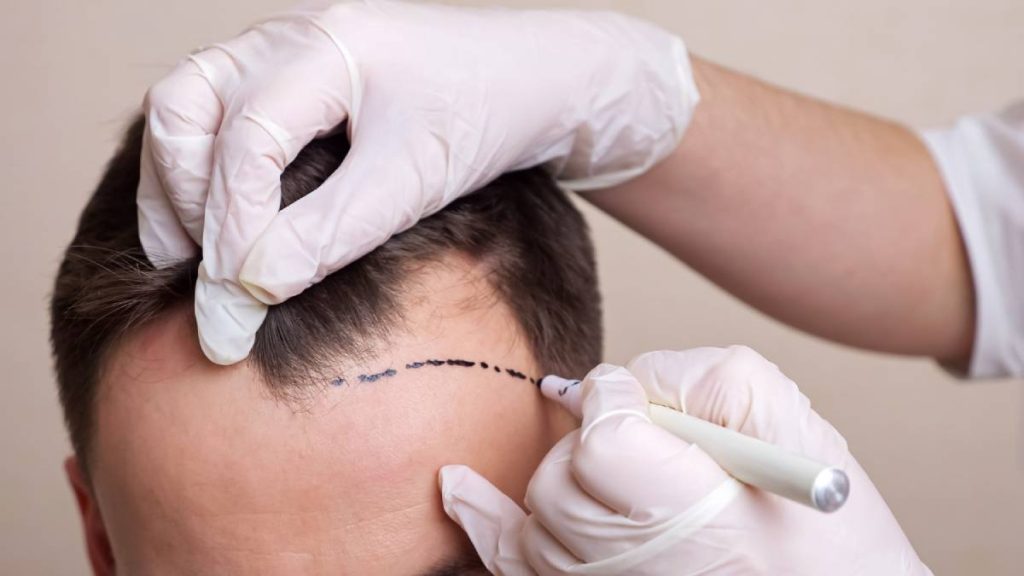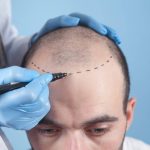Understanding Hair Transplantation for Thinning Hair
Hair loss can be a distressing issue for many people, especially when it comes to thinning hair. Fortunately, hair transplantation offers a permanent solution for individuals struggling with this condition. The process involves moving healthy hair follicles from one area of the scalp to the thinning or balding areas, resulting in a fuller and more natural-looking head of hair. Unlike temporary solutions like wigs or medications, hair transplantation provides long-lasting results. By transplanting your own hair, the procedure ensures that the newly transplanted hair grows naturally, seamlessly blending with the existing hair. This makes hair transplantation an ideal solution for anyone looking for a permanent fix to their thinning hair problems.
How Hair Transplantation Can Restore a Full, Natural Hairline
One of the main benefits of hair transplantation is its ability to restore a natural and youthful-looking hairline. For many individuals with thinning hair, the most noticeable areas are the hairline and crown. With hair transplantation, hair follicles are strategically placed to mimic the natural direction and growth pattern of your hair. This not only helps thicken thinning areas but also restores the appearance of a fuller hairline. As the transplanted hair grows, it blends with your existing hair, creating a seamless look. This natural result is one of the reasons why hair transplantation has become such a popular solution for people looking to regain their youthful appearance.
What to Expect During the Hair Transplantation Procedure
The hair transplantation procedure typically involves two main techniques: Follicular Unit Extraction (FUE) and Follicular Unit Transplantation (FUT). FUE is a minimally invasive technique where individual hair follicles are extracted and transplanted to the thinning areas. FUT, on the other hand, involves removing a strip of scalp from the donor area, which is then divided into individual follicular units for transplantation. Both techniques are highly effective, and the choice between them depends on your specific needs and the surgeon’s recommendation. Regardless of the technique used, the procedure is performed under local anesthesia, ensuring that you experience minimal discomfort. Most patients can return to normal activities within a few days, although full hair growth may take several months.
Post-Procedure Care for Successful Hair Transplantation
After undergoing hair transplantation, proper post-procedure care is essential for ensuring optimal results. In the first few days following the procedure, you may experience some swelling, redness, and mild discomfort in the treated areas. These side effects typically subside within a week. It is crucial to follow your surgeon’s aftercare instructions, which may include avoiding direct sunlight, refraining from touching or scratching the transplanted area, and using prescribed medications to reduce swelling or prevent infection. During the recovery period, it is normal for the transplanted hair to fall out before new hair begins to grow. Full results from hair transplantation are usually visible within 12 to 18 months.
The Long-Term Benefits of Hair Transplantation for Thinning Hair
One of the most appealing aspects of hair transplantation is the long-term benefits it provides. Unlike temporary solutions, such as hairpieces or topical treatments, hair transplantation offers a permanent solution to thinning hair. Once the transplanted follicles take root and begin to grow, they will continue to grow for a lifetime, just like natural hair. This long-lasting result makes hair transplantation a worthwhile investment, as it restores both your appearance and self-esteem. Additionally, the new hair will blend seamlessly with your existing hair, providing a natural, fuller look that requires minimal maintenance. Over time, this can significantly improve your overall appearance and boost your confidence.
Hair Transplantation: A Cost-Effective Long-Term Solution
While the initial cost of hair transplantation may seem high, it is important to consider the long-term savings. Unlike other treatments, such as ongoing medication or hairpieces, hair transplantation is a one-time procedure that offers permanent results. Over time, the cost of temporary solutions can add up, while the cost of hair transplantation remains a one-time expense. Furthermore, the improved self-confidence and enhanced appearance can lead to positive changes in your personal and professional life. In the long run, hair transplantation provides value that goes far beyond the financial cost, making it a cost-effective solution for thinning hair.
Is Hair Transplantation Right for You?
While hair transplantation offers many benefits, it is not the right solution for everyone. The best candidates for hair transplantation are those with sufficient healthy hair in the donor area and a stable pattern of hair loss. If you have advanced hair loss with no viable donor hair, you may not be a good candidate for the procedure. Additionally, individuals with certain medical conditions may not be suitable candidates for hair transplantation. It is essential to consult with a qualified and experienced surgeon to determine if hair transplantation is the right solution for your needs. Your surgeon will evaluate your hair loss, discuss your goals, and help you decide the best course of action.
Conclusion
In conclusion, hair transplantation is an effective, permanent solution for those struggling with thinning hair. By restoring a fuller, natural-looking hairline and increasing hair volume, hair transplantation not only improves physical appearance but also boosts self-esteem and confidence. The procedure provides long-lasting results, with minimal maintenance required after recovery. For individuals seeking a permanent fix to thinning hair, hair transplantation offers a life-changing solution. With proper care and an experienced surgeon, you can enjoy the benefits of a fuller head of hair and a restored sense of confidence for years to come.
Frequently Asked Questions
- What is hair transplantation?
- Hair transplantation is a surgical procedure that moves hair follicles from a donor area to areas with thinning or no hair, offering a permanent solution to hair loss.
- How long does it take to see results from hair transplantation?
- New hair growth typically begins within 3-4 months, with full results visible in 12-18 months as the transplanted hair grows and blends with existing hair.
- Is hair transplantation permanent?
- Yes, the transplanted hair is permanent and grows naturally, just like your original hair, providing a lasting solution to thinning hair.
- Does hair transplantation hurt?
- The procedure is done under local anesthesia, so there is minimal pain during the surgery. Some discomfort or swelling may occur afterward, but it is usually manageable.
- How much does hair transplantation cost?
- The cost of hair transplantation varies based on factors such as the technique used and the number of grafts required, typically ranging from $4,000 to $15,000.
- What are the risks associated with hair transplantation?
- While rare, risks include infection, scarring, or poor graft survival. Choosing an experienced surgeon minimizes these risks significantly.
- How long does recovery take after hair transplantation?
- Most people recover within 7-10 days, though full hair growth takes 12-18 months to fully appear after the procedure.
- Can I resume normal activities after hair transplantation?
- Most patients can resume normal activities within a few days, but strenuous activities should be avoided for 1-2 weeks after surgery.
- Is hair transplantation suitable for everyone?
- Ideal candidates for hair transplantation have stable hair loss and sufficient healthy hair in the donor area. A consultation with a surgeon will determine if you’re a good candidate.
- What should I do after hair transplantation?
- Follow your surgeon’s post-procedure care instructions, including avoiding direct sunlight and not scratching or touching the treated area, to ensure the best results.












